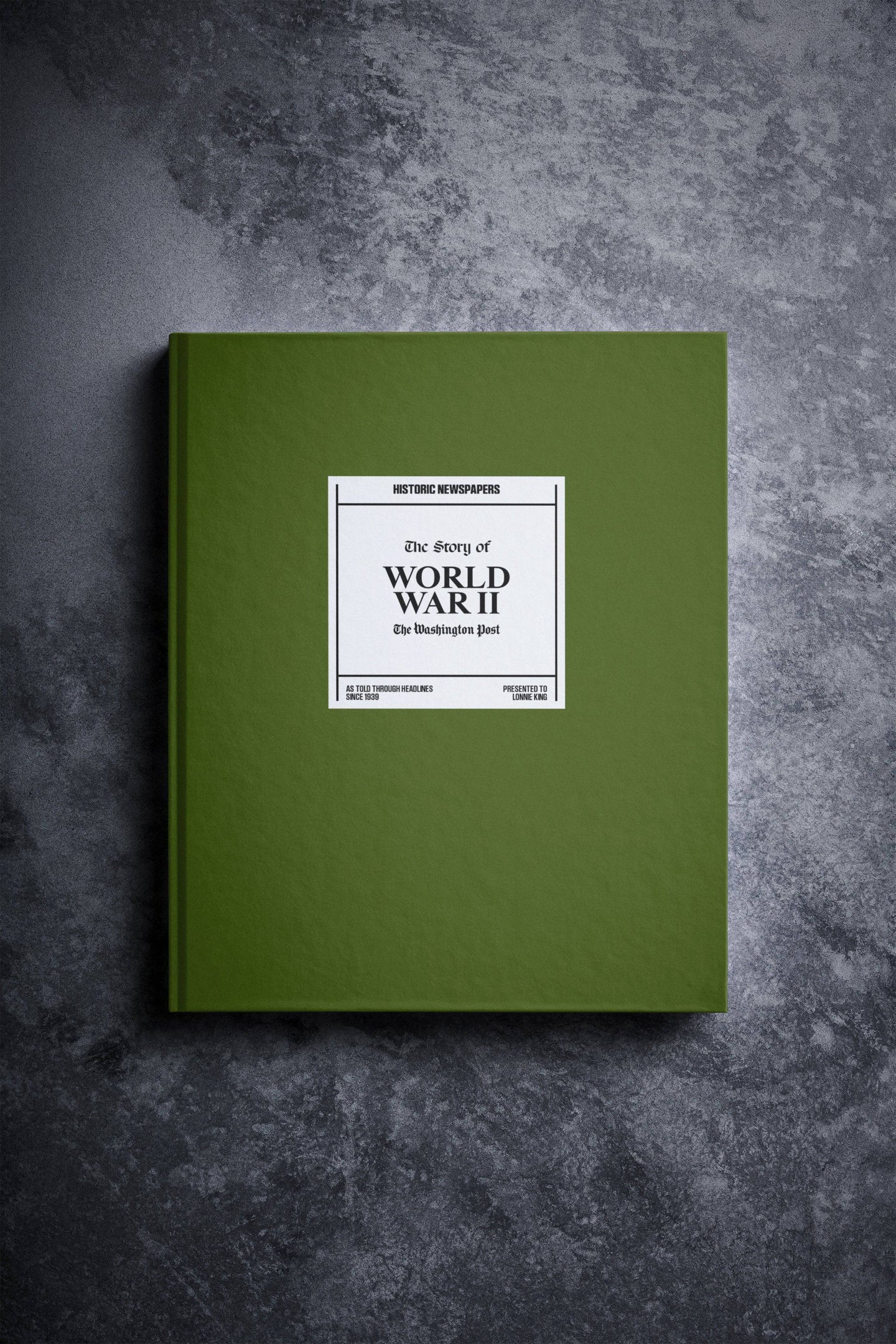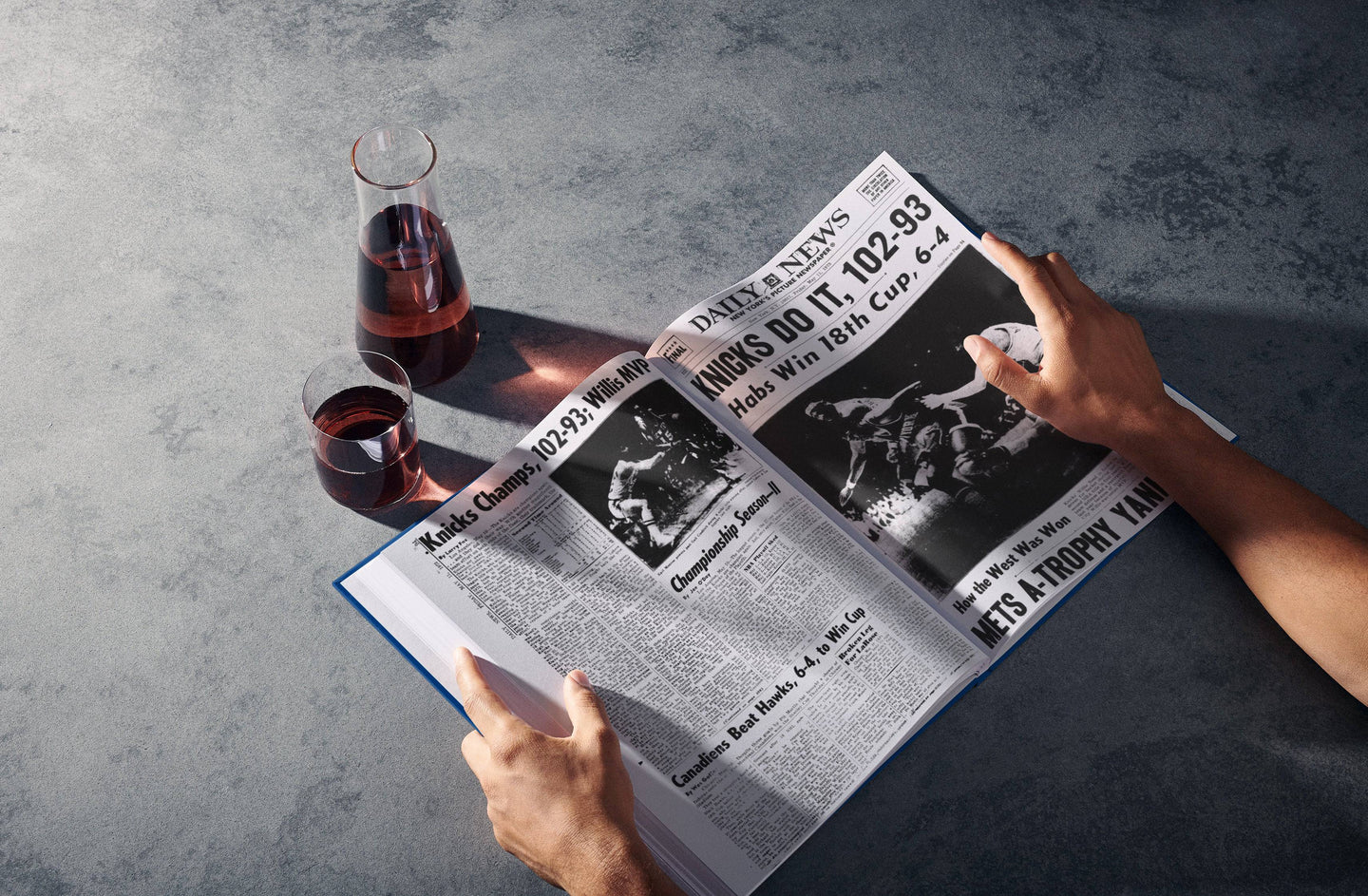On 7 September 1940, a year into the Second World War, the sky above London became frighteningly occupied by bomb-dropping German aircraft. The Luftwaffe, the German air force, began the first of many bombing raids on the United Kingdom, causing destruction, death and panic.
The Blitz, named after the German word ‘Blitzkrieg’, meaning ‘lightning war’, is the term used to describe the series of frequent bombing raids on cities across the United Kingdom. These raids would last until 11 May 1941, with top industrial cities being the main targets. With a high death toll and great damage to infrastructure, the Blitz raids were attempts to lower British morale for the war and interrupt the operations of Britain’s most important economic foundations, including docks and factories.
In this blog post, we explore genuine 1940 and 1941 newspaper articles written about the Blitz, revealing how the events were being reported by the press at the time. Reading an original newspaper from the Blitz is fascinating, since we can understand the bombing raids through the eyes of those who witnessed the devastation unfold.

A Daily Mirror front page from the Blitz, 16 November 1940
- Why Did The Blitz Happen?
- The First Bombing Raid on London, 7 September 1940
- “50 Out Of 72 Raiders Lost In London Attack,” 16 September 1940
- “Palace Bombed Again”
- “Night Blitz Begins In Provinces,” 16 November 1940
- “London Lit Up By Mass Bombing,” 30 December 1940
- The Bombing of the House of Commons, May 1941
Why Did The Blitz Happen?
Before the Second World War began, the threat posed by aircraft warfare was discussed by nations around the world, with leaders recognising that another war could be incredibly destructive. The Nazis were defeated at the Battle of Britain, suffering huge losses when it came to an end in October 1940. The next plan was to begin a series of raids on the United Kingdom, attacking from the air.
The German army had successfully occupied France, and Adolf Hitler was hoping Britain would submit so he could focus on the Soviet Union. The Battle of Britain proved that Britain’s air power was much stronger, so Hitler decided that a prolonged bombing campaign would be most effective, igniting fear among the army, the air force and civilians. The Blitz was an operation that Hitler hoped would give Germany a strong lead in the war, and weaken Britain to the point of surrender.
While the Blitz was ongoing, many children were evacuated from their home cities to the countryside for safety, and cities had to obey strict rules to keep people safe. Cities would go into ‘black-out’ phases, during which no lights could be switched on in order to stop the Luftwaffe seeing their targets clearly. Garden air raid shelters became very common, so people could quickly and easily get to safety if a raid suddenly began at night. The people of London even took shelter in Underground train stations, with around 177,000 Londoners sleeping in the tube systems overnight to hide away from the night-time bombings.
The First Bombing Raid on London, 7 September 1940
The first bombing raid on London, known as Black Saturday, was an accident. The bombs were supposed to hit the docks, but extreme fog caused the pilot to miss the target. At the start of the Blitz, the dropping of the bombs was very inaccurate. The raid caused the biggest fire London had seen since the Great Fire of London in 1666, and around 2,000 people were wounded or killed. London would be attacked by the Luftwaffe more than any other city, but other cities in the UK would also experience high death numbers and destruction to public buildings.
“50 Out Of 72 Raiders Lost In London Attack,” 16 September 1940
On 16 September 1940, the Daily Mirror wrote about a Blitz attack in London. The Blitz newspaper report informs the public that:
“At least 50 enemy planes were shot down yesterday when Goering sent a force estimated to number seventy-two – bombers escorted by his crack “yellow nose” squadron – to attack London.”

Daily Mirror headline, 16 September 1941
The newspaper then makes it clear to the public that Germany had suffered losses after the bombing of London:
“Little more than an hour later about 400 German planes crossed the east coast heading for the capital. This attack was also smashed up with loss to the enemy.”
“Goering had returned to his old tactics of sending mass formations to raid the capital. But the mass raiders were no more successful than the lone planes with their hit-and-run terror glides.”
After witnessing some German destruction, the Daily Mirror reports on the public reaction in London:
“Thousands of people in the heart of London cheered wildly as they watched a Spitfire send a German bomber hurtling to destruction shortly after midday.”
“Palace Bombed Again”
The Daily Mirror wrote about the Blitz attacks that hit Buckingham Palace, making the public aware that the Palace was a target for the Luftwaffe:
“More bombs fell on Buckingham Palace in the noon raid yesterday, but the German raider which dropped the bombs was shot down a few seconds later by Spitfires.”
Luckily, the newspaper reports that there were no casualties at the Palace, and the King and Queen were not in the Palace when the bombs fell. As well as this, two of the bombs did not explode despite landing on target in the Palace:
“One bomb, which did not explode, fell in the Queen’s private apartments.”
“One high explosive bomb fell on the lawns. It, like the other did not explode.”

Daily Mirror headline, 16 September 1940
“Night Blitz Begins In Provinces,” 16 November 1940
Two months later and the Blitz continued to rage on, with the Daily Mirror reporting on this day about the damaging impact of the bombing raids in Coventry.

Daily Mirror headline, 16 November 1940
According to the Daily Mirror, the raids on Coventry:
“…mark the start of widespread night raids on industrial towns.”
It is clear that the Luftwaffe were not just targeting the Royal Family and the capital, but instead intended to weaken Britain by bombing her factories, ports and other essential infrastructure that were supporting the nation through the war. However, the Luftwaffe also destroyed key landmarks in Britain:
“Coventry’s most beautiful fourteenth-century cathedral was one of the many buildings destroyed, the Air Ministry stated yesterday.”

Photo from the Daily Mirror, 16 November 1940. The caption reads:
“…the wreckage of the city’s famous fourteenth century cathedral – one of the numerous non-military objectives hit by the raiders.”
As well as the stunning cathedral, the bombs also destroyed:
“An isolation hospital, two churches, public baths, two clubs, a school, a hotel, four public shelters, cinemas, a police station, post office and two first-aid posts were damaged.”
The newspaper also provided some key facts to the public about the raid, claiming that five hundred planes attacked the area, dropping 30,000 fire bombs. The newspaper also discovered that the raid was primarily aimed at the British warplane industry, and believed the bombing of Coventry could mean that Germany was changing her tactics.

Photo from the Daily Mirror, 16 November 1940. The caption reads:
“Patients from a bombed Coventry hospital awaiting removal to safety.”
“London Lit Up By Mass Bombing,” 30 December 1940
As the year 1940 was drawing to a close, London was once again the target of a severe mass bombing. A reporter for the Daily Mirror writes:
“London’s skyline was brilliantly lit by many fires when the blitz was turned on the capital again last night.”
“The glare was so bright that the barrage balloons above the city could be clearly seen.”

Daily Mirror headline, 30 December 1940
After this attack, it was clear that Germany had not turned her full attention to Britain’s industrial towns and still intended to cause more damage in the capital. The Daily Mirror reports that:
“In a few hours the raid had developed into one of the fiercest London has ever known.”
As soon as the bombing alert noise had sounded across London, incendiary bombs fell quickly on London, causing many fires to start across the city. However, it seemed there was a lot of confusion around the sudden departure of the Luftwaffe:
“Then, before midnight, the Luftwaffe suddenly folded up its wings and left. And several hours afterwards it still showed no signs of returning.”
“Air experts confessed themselves baffled as to the reason for its leaving so soon. They pointed out that there were many hours of darkness left.”
Experts also noticed that not many high explosives had fallen, usually following the dropping of thousands of incendiary bombs. The Daily Mirror provides three reasons give by experts as to why this might have happened:
- “That our night fighters patrolling the fire-lit skies, scared the heavy bombers off.”
- “That the Germans were carrying out their new policy of short intensive raids.”
-
“That ground mist at German bases compelled them to return quickly was becoming too thick for them to return safely.”
The Bombing of the House of Commons, May 1941
As one of the most significant bombing incidents, newspaper articles about the Blitz described the destruction of the House of Commons in May 1941. The air raid left most of the House of Commons in ruins, causing MPs to be homeless while dealing with a national crisis.
Occurring overnight on 10 and 11 May, the oldest section of the Palace of Westminster, the roof of Westminster Hall, was set on fire. The Commons chamber was also set alight, and Westminster Hall became the sole focus of firefighters, causing the entirety of the House of Commons to be destroyed. Historians of Parliament also claimed that a bomb had hit the House of Lords, but it passed through the Chamber floor without going off.
The Daily Mirror wrote:
“But though Hun bombs have ripped the heart out of the historic building, they are not going to interfere with the next appointed meeting of M.P.s. New accommodation is available, and the House will carry on with much of its traditional ceremony unaltered. Mr. Churchill, in black overcoat and hat, inspected the damage yesterday.”
Despite the damage done, the newspaper assures the public that business will resume as normal in Parliament and that the bombings will not completely disrupt the government’s work, especially during a time of national crisis.
The Blitz Comes to an End
The Blitz raids lasted for 8 months, causing devastating loss and damage to the people of Britain. 43,000 civilians lost their lives, which was almost half of the entire civilian death rate for Britain throughout the entire Second World War. With around 1.1 million flats and houses destroyed in London, around 1 in 6 London residents were made homeless. Despite the damage caused by the Luftwaffe, the Blitz ended positively for Britain, with the bombing raids proving to be a strategic mistake for Germany.
After the London bombings of May 10 and 11, Adolf Hitler called the Blitz raids off as he turned the attention of his forces towards the Soviet Union. The Blitz had been a military defeat for Germany, and failed to achieve the nation’s main intentions of dominating warfare in the air ahead of an English invasion. The RAF had already won the Battle of Britain in September 1940, and purely air power had not succeeded in forcing the United Kingdom to surrender the war.


























Follow us